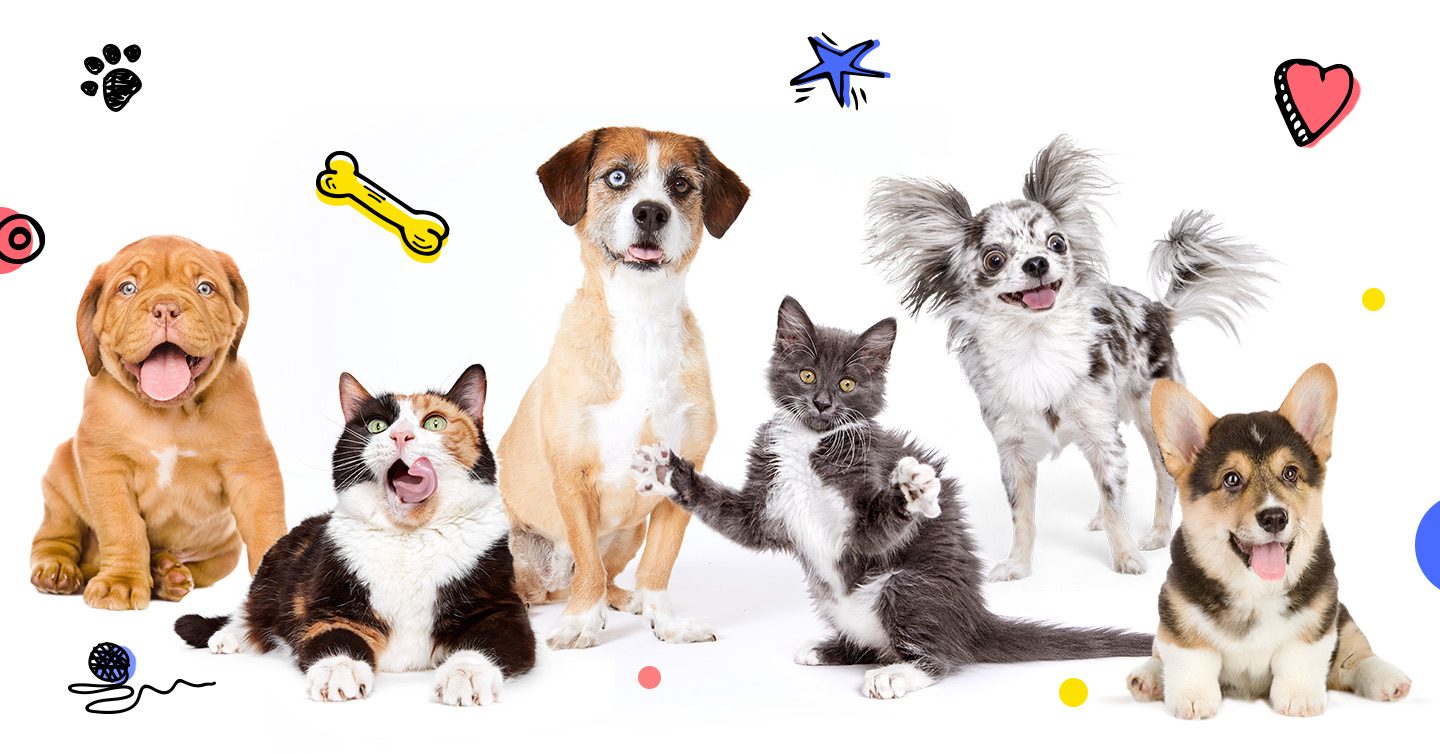Have a new puppy or kitten? The right time to enroll your fur baby in pet insurance is right now. Here are 8 key reasons why.
1. Ruh-rohs & cat-astrophes happen – especially to fur babies.
A puppy or kitten’s curiosity to explore the new world around them can sometimes lead them to doing crazy things with costly consequences, like eating random objects, succumbing to fracturing falls, or playing a little too rough with fur friends and ending up with bite wounds. Depending on the severity of the accident and if emergency surgery is needed, you could be looking at a vet bill of $5k or more! A good pet insurance plan can provide reimbursement for eligible invoices from your vet’s office.
When unexpected accidents happen, pet insurance can help you say ‘yes’ to the best care for your fur baby, even when it comes at a high cost. And with an estimated 1 in 3 pets in the U.S. needing emergency veterinary treatment in any given year, it is very likely that your pet will face at least one significant accident or injury in their lifetime.*
2. Even healthy puppies & kitties get sick sometimes.
Puppies and kittens have more fragile immune systems than adults, which can make them more susceptible to picking up certain illnesses and diseases. From ear, eye, and respiratory infections, to digestive issues and intestinal worms, there are several common conditions that pets can develop in their first year of life.
If your fur baby gets sick, pet insurance can help you cover the costs of sick visit exam fees, diagnostics, treatment, and prescription medications they need to get better. Plus, if you insure your puppy or kitten early, they’ll be covered for other common health problems that develop as pets age, including dental disease and arthritis.
3. Hereditary & breed-specific conditions can show up in pets of all ages.
Like humans, health conditions can be passed down to pets by their parents. Some breeds are also more prone to developing certain diseases and injuries than others. While some hereditary or breed-specific conditions like epilepsy, hip dysplasia, and intervertebral disc disease may show up early in a pet’s life – others, like polycystic kidney disease or heart disease, may not manifest until much later on.
Regardless of when a pet is diagnosed with a hereditary or breed-specific condition, it may require ongoing monitoring and treatment for the remainder of their life – all of which can get very expensive. Enrolling in a pet insurance plan now can help you get ahead of these conditions before they show up and help ensure your pet is covered for the course of treatment your vet recommends. Be sure to gather as much information as you can on a plan’s coverage before enrolling – their sample policy is a great place to start!
Pet Pro Tip: New to feline dental care? Join the Pumpkin Wellness Club, a new program that actually pays you for getting your cat the routine preventive care that they need to stay healthy. Members have the option to get up to $150 in cash for dental cleanings each year, plus even more savings on vaccines and annual health screenings.
4. You don’t have to worry about insurance not covering pre-existing conditions.
The best time to enroll in pet insurance is when your puppy or kitten is young and healthy, so your plan can cover accidents and illnesses that may develop in the future. Most pet insurances do not cover pre-existing conditions a.k.a. conditions that showed symptoms or were treated before enrolling or during the waiting period.
Although some insurance plans, like Pumpkin plans, will cover curable pre-existing conditions (with the exception of knee & ligament conditions) that have been cured and free of symptoms and treatment for 180 days and occur again in the future – you don’t ever want to be in a position where your pet is without coverage when they really need it. For this reason, the sooner you sign up your new pet for insurance – the better!
5. The cost of vet care can really add up over a lifetime.
Did you know that families can expect to spend about $13k-17k on veterinary care over their pet’s life?** If your fur baby were ever to face a catastrophic emergency or serious chronic illness, it could end up costing even more. While it may be hard to fathom spending this much on care when your pet is young and healthy, costly accidents and illnesses have a way of showing up when you least expect them. Whether it happens while you’re on vacation or right after you splurged on a new couch – no matter how much planning you do, it’s usually never a good time.
Pet insurance can help prepare you financially for the common accidents and illnesses that are likely to pop up during your pet’s life – and the crazy unexpected ones, too.
6. It’s easier to afford the best, most advanced treatments for your pet.
Veterinary medicine has come a long way over the past decade. From life-changing procedures, like stem cell therapy for osteoarthritis and chemotherapy for cancer, to alternative treatments like acupuncture and chiropractics to help rehabilitate pets with orthopedic injuries and chronic pain – there are more advanced treatments available to pets than ever before that can drastically improve their quality of life. But this care often comes at a high cost.
Pet insurance can help parents like you afford the best, most advanced medical care when your fur baby gets hurt or sick. Because shouldn’t every pet have access to the best care possible?
7. You can prioritize your pet’s preventive care in addition to their medical care.
In addition to helping your pet get the best medical care when they’re hurt or sick, there’s a cost to helping them stay healthy in year one, and every year after. In fact, as veterinarians, we recommend that all pets get routine preventive care, like annual wellness exams to assess head-to-tail health, vaccines to prevent life-threatening diseases, and yearly screening tests to catch harmful parasite infections early when treatment can be most effective.
Knowing that staying on top of your pet’s preventive care is an ongoing expense, some pet insurance providers like Pumpkin offer an optional wellness package to help cover these payments. While Pumpkin’s optional Preventive Essentials Pack is not an insurance benefit, it’s an easy add-on you can purchase with your insurance plan. Packages like these are a great way to help you plan and pay for wellness care your new pet needs to start healthy and stay healthy throughout their life.
8. When it comes to our pets, peace of mind can be priceless.
Nothing is more upsetting or stressful than when your pet is sick or hurt. In those moments, we will do anything to ease their pain, get them well, or keep them comfortable. The last thing we want to be worried about is the cost of the tests, treatments, or medication that they need.
There are plenty of stories about pet parents who regret not purchasing pet insurance but rarely do we meet pet parents with hurt pups or sick kitties that regret purchasing pet insurance. One day you’ll be glad you have it, if for no other reason than for the peace of mind that comes with being able to say to your vet, “do whatever it takes” instead of “what will it cost?”
Final thoughts
We can’t put a dollar amount on the joy our pets bring to our lives, so we shouldn’t have to put one on theirs. Whether you ultimately decide to purchase a plan for your pet, or feel comfortable covering their potential care needs without one, the best time to research your options and consider pet insurance is right now. Money aside, nothing feels better than providing the best care possible for your pet, and knowing you played a key role in helping them get better, grow stronger, and stay healthy for longer.




